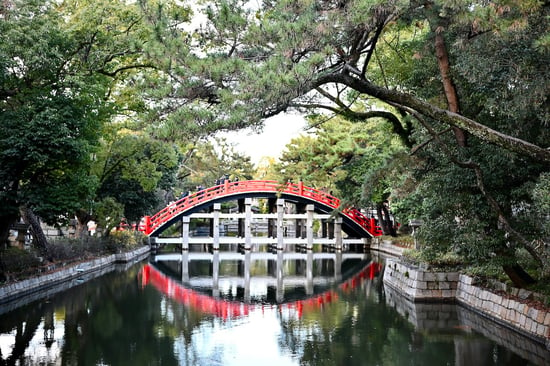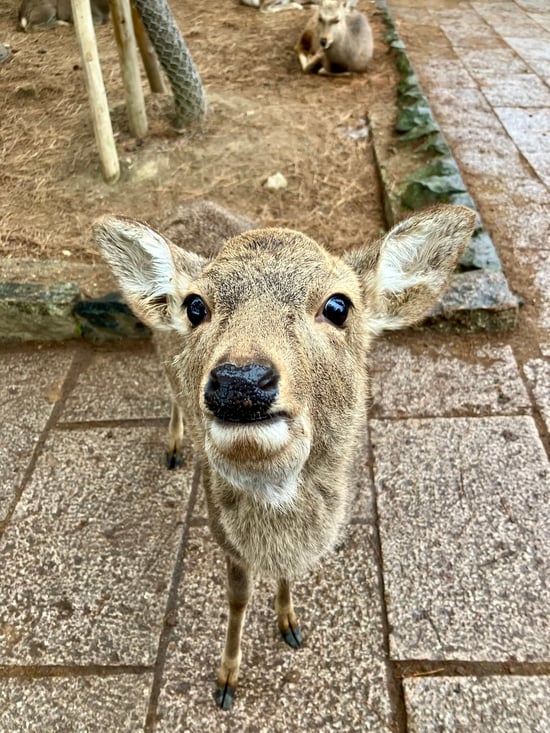Himeji Travel Guide
姫路市 • ひめじ
So you're planning a day trip to Himeji? Dive into our comprehensive Himeji travel guide covering everything you need to know about the city and the must-do experiences awaiting you.
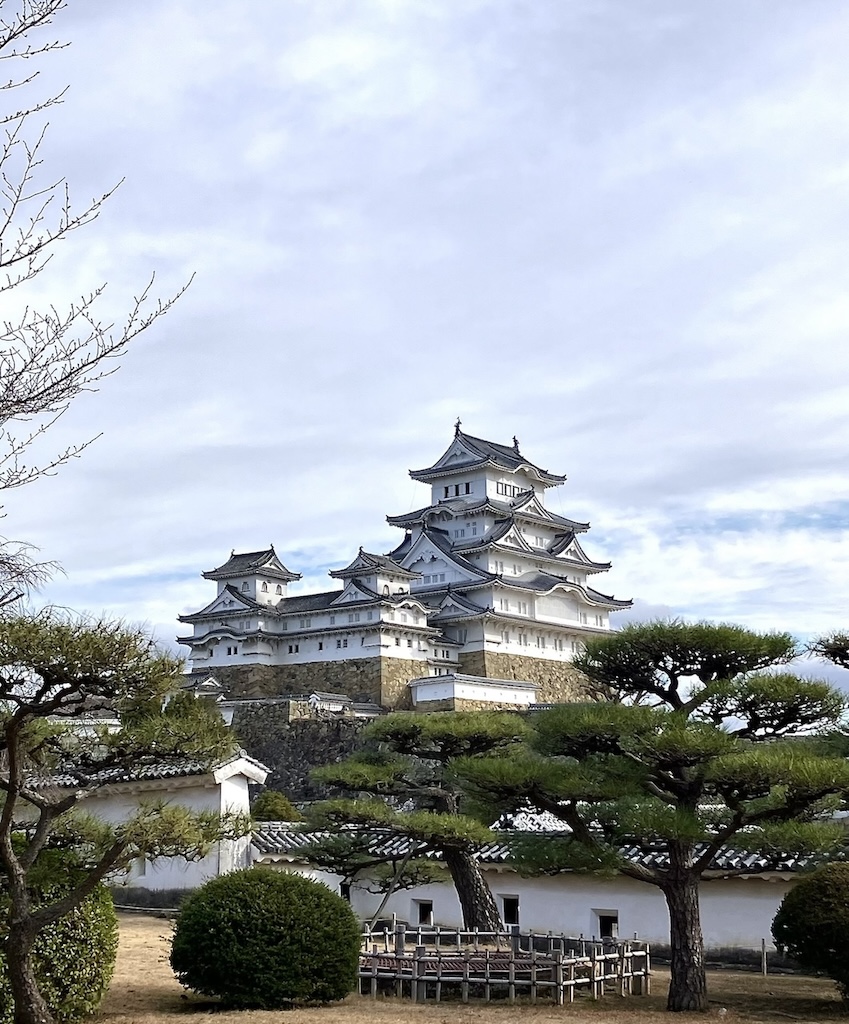
Himeji Travel Guide:
Home to Japan's Largest Castle
Himeji is located in Hyogo Prefecture, west of Osaka and Kyoto. Himeji is home to the iconic Himeji Castle, Japan's largest castle. Designated as a UNESCO World Heritage Site in 1993, Himeji Castle is one of Japan's most beautiful and well-preserved castles, dating back to the 17th century. Visitors can explore the castle's intricate architecture, expansive grounds, and impressive defensive features, offering a glimpse into Japan's feudal history. In addition to Himeji Castle, the city boasts other attractions, including the wonderful Kōko-en Garden, a traditional Japanese garden featuring koi ponds, teahouses, and landscaped greenery. Himeji also offers a charming downtown area with shopping streets and restaurants serving local delicacies. Given its accessibility by train and the relatively compact size of its main attractions, Himeji makes for a convenient and rewarding day-trip destination for travelers exploring the Kansai region of Japan.
Himeji Travel Guide: Quick Tips
Himeji's Top Sights
Embark on an enchanting journey through Himeji's top sites. With its diverse array of attractions, Himeji promises an unforgettable experience for every traveler.
We've highlighted all the attractions we visited and adored with the universal symbol of love, ♡.
- Himeji Castle: ♡ Himeji Castle, also known as the White Heron Castle, is a UNESCO World Heritage Site. Renowned for its stunning white plaster exterior and elegant design, Himeji Castle is one of the finest surviving examples of Japanese castle architecture from the feudal period. It is also Japan's largest castle. Construction on the current castle began in 1601 and lasted until 1609. It survived both the bombing of Himeji during World War II and an earthquake in 1995. Himeji Castle features intricate wooden construction, defensive fortifications, and expansive grounds. The castle is a very popular tourist destination and the most visited castle in Japan. In order to avoid crowds, we recommend visiting on a weekday. Admission cost, opening hours, and additional information can be found on the Himeji Castle website.
- Kōko-en Garden: ♡ Kōko-en Garden is a beautifully landscaped traditional Japanese garden located next to Himeji Castle. Built in 1992 to commemorate the 100th anniversary of the establishment of the Himeji municipality, Kōko-en Garden comprises nine separate, themed gardens, each showcasing different styles and elements of traditional Japanese garden design. The gardens were beautiful, even in wintertime, with features like tea houses, koi ponds, waterfalls, and seasonal flora. The garden provides a peaceful and serene atmosphere, making it an ideal complement to a visit to Himeji Castle. A combo ticket is available should you want to visit both Himeji Castle and the Kōko-en Garden.
- Shoshazan Engyoji Temple: Shoshazan Engyoji Temple, commonly referred to as Engyo-ji Temple, is a historic Buddhist temple located on Mount Shosha in Himeji. Founded in 966 AD, Engyo-ji Temple is renowned for its serene atmosphere, beautiful natural surroundings, and well-preserved architecture. The temple complex consists of multiple buildings spread across the mountainside, including the main hall, pagodas, and meditation halls. Engyo-ji Temple gained international recognition after being featured in the film "The Last Samurai," further adding to its allure as a cultural and historical destination. To reach the temple from Himeji Station or Himeji Castle, it is best to take a public bus or the ropeway. Additional information can be found on the Visit Himeji website.
- Himeji City Museum of Art: The Himeji City Museum of Art is a prominent cultural institution showcasing a diverse collection of artwork, including both Japanese and international pieces. The museum features rotating exhibitions of paintings, sculptures, ceramics, and other forms of visual art from various periods and genres. The permanent collection includes pieces by renowned artists such as Rodin, Antoine Bourdelle, and Paul Delvaux.
- Hyogo Prefectural Museum of History: The Hyogo Prefectural Museum of History is a museum dedicated to showcasing the history and culture of Hyogo Prefecture. The museum features exhibits that cover various aspects of the region's history, including its ancient origins, feudal era, modern development, and cultural heritage. One of the museum's more popular exhibits showcases the anatomy of Himeji Castle and details the reconstruction work of the castle that has taken place over the years.

A Taste of Himeji
Himeji offers a variety of delicious culinary offerings, with some regional specialties worth trying during your visit.
Specialty Foods
Himeji is known for several delicious local specialties:- Himeji Oden: A hot pot dish featuring various ingredients like fish cakes, tofu, and vegetables simmered in a savory broth.
- Himeji Beef: A high-quality beef produced in the Himeji area. Raised with meticulous care and attention to diet and breeding, Himeji Beef cattle are typically of the Tajima breed, the same breed used for Kobe beef. Himeji beef is often enjoyed as grilled steak or in traditional Japanese dishes like sukiyaki and shabu-shabu.
- Fresh Seafood: Himeji is known for its fresh seafood, including "anago" (saltwater eel), which is often served sashimi-style, tempura, or grilled.
- Karinto Manju: A popular sweet treat consisting of steamed buns filled with a sweet red bean paste.
Popular Restaurants
Himeji is full of restaurants serving a variety of cuisines. Looking for other restaurant suggestions in Himeji? Check out the links below.
Shopping in Himeji
Himeji offers a unique shopping experience that blends traditional crafts with modern finds. Here are some areas for shopping in Himeji:
Miyuki Street: A covered shopping street next to Himeji Station, Miyuki Street offers a mix of shops selling traditional goods, modern clothing, and food.
Piole Himeji: A shopping mall located near Himeji Station and Himeji Castle, Piole Himeji offers a large assortment of shops from both local and international brands, food, and more.
Himeji Castle Souvenir Shop: The Himeji Castle souvenir shop offers a variety of unique and traditional items for visitors to commemorate their visit to this iconic landmark. Visitors can find locally made crafts, traditional Japanese souvenirs, and snacks or sweets unique to the region.
Himeji-Specific Souvenirs
Tama Tsubaki: Tama Tsubaki is a traditional confectionery treat from Himeji. It consists of small, red bean paste wrapped in a sweet rice dough (not too dissimilar from mochi). The name "Tama Tsubaki" roughly translates to "round camellia," reflecting the shape of the treat.
Local Sake: Sake from Himeji is highly regarded for its quality and craftsmanship. The sake produced in Himeji ranges from fragrant and light to rich and full-bodied, catering to various tastes and preferences. Looking for more information about sake from Himeji? Check out the Visit Himeji website.
Karinto Crackers: Karinto crackers are a traditional Japanese snack made from deep-fried dough coated in a sweet syrup, typically flavored with brown sugar and soy sauce. The dough is cut into bite-sized pieces before frying, resulting in crispy crackers with a sweet and savory taste. We bought a package of karinto crackers at the Himeji Castle Gift Shop and devoured them on the train ride back to Osaka!
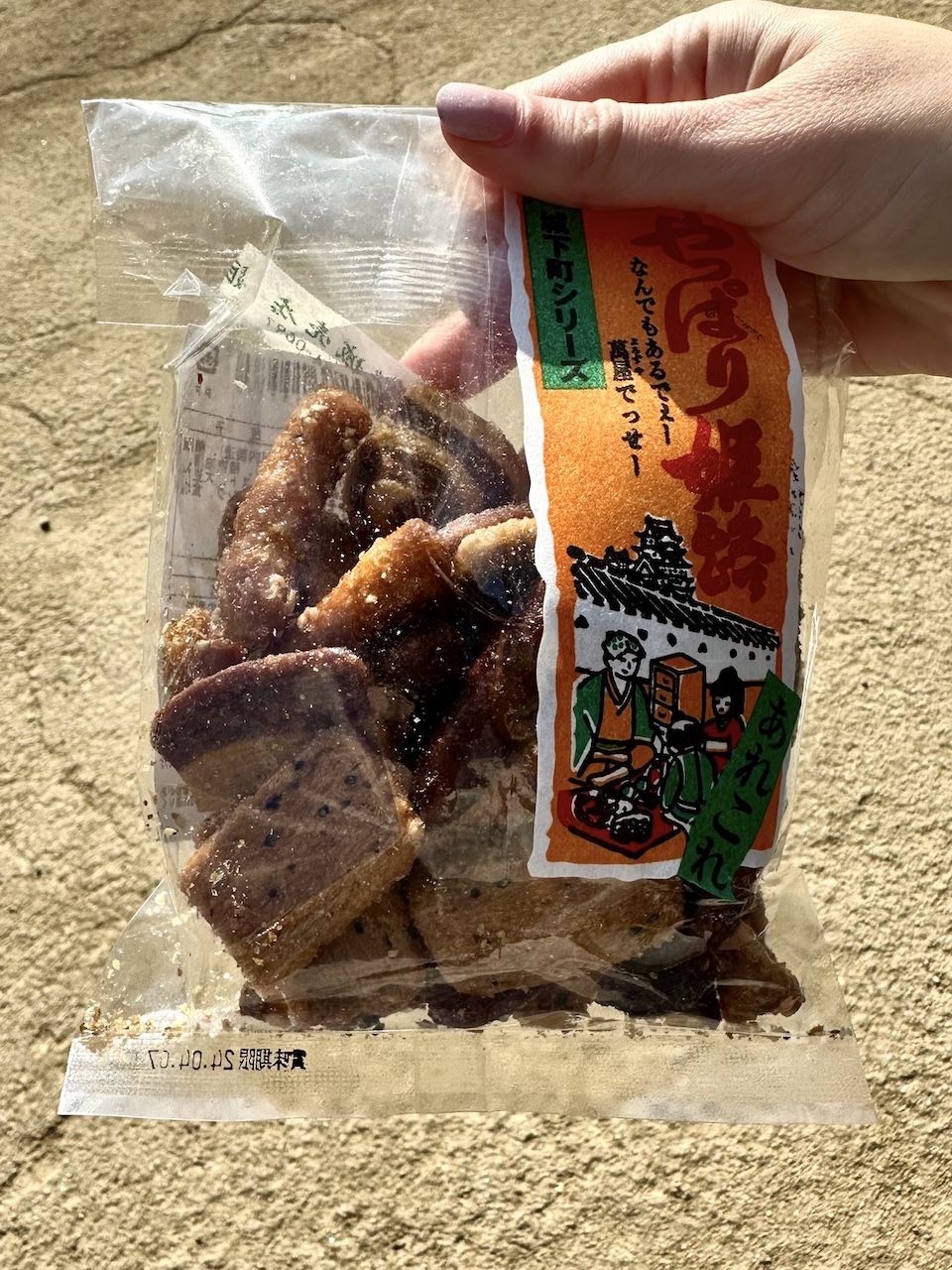
Getting to/from Himeji
Both Kyoto and Osaka are conveniently connected to Himeji by Shinkansen, making it a straightforward journey, and a great city to visit for the day.
From Kyoto to Himeji (Train):
Shinkansen: Take the Shinkansen from Kyoto Station to Himeji Station. The journey takes approximately 44-68 minutes. Train tickets can be purchased in advance using the Tokaido Sanyo Kyushu Shinkansen Online Reservation Service. Route options, departure times, and fares are also available to view on the reservation service website.
JR Kyoto Line: Alternatively, you can take the JR Kyoto Line from Kyoto Station to Himeji Station. The journey takes approximately 95-100 minutes. Train tickets do not need to be purchased in advance and can be purchased at the station. To see route options, departure times, and fares, visit the JR West website.
From Osaka to Himeji (Train):
JR Kobe Line: From Osaka Station, take the JR Kobe Line to Himeji Station. The journey takes approximately 62 minutes. Tickets do not need to be purchased in advance and can be bought at the station. To see route options, departure times, and fares, visit the JR West website.
Shinkansen: Alternatively, you can take the Shinkansen from Shin-Osaka Station to Himeji Station. (This is the route we chose to get between Osaka and Himeji.) The journey takes approximately 30 minutes. Train tickets can be purchased in advance using the Tokaido Sanyo Kyushu Shinkansen Online Reservation Service. Route options, departure times, and fares are also available to view on the reservation service website.
Hanshin Main Line: Alternatively, you can take the Hanshin Main Line from Hanshin Osaka-Umeda Station to Sanyo Himeji Station (which happens to be next to Himeji Station). The journey takes anywhere from 95-112 minutes. Train tickets do not need to be purchased in advance and can be purchased at the station. To see route options, departure times, and fares, visit the Japan Travel by Navitime.
When planning your trip, it's advisable to check the latest train schedules for the most accurate and up-to-date information.
Getting Around Himeji
Himeji is a relatively compact city with many of its attractions located within walking distance of each other, especially around Himeji Castle and the city center. The castle itself is clearly visible from Himeji Station and just a short walk away.
Walking: The city is pedestrian-friendly, and walking is an excellent way to explore Himeji, especially around Himeji Castle, where many of the main attractions are located. We found walking was the best way for us to get around since many of the sites that we planned on visiting were near one another and not too far from Himeji Station.
Buses: Himji has an extensive bus network that connects various parts of the city. Buses are useful for reaching attractions that are a bit farther from the central area.
Taxi: Taxis are available in Himeji and can be convenient for reaching specific destinations quickly, especially if you're traveling with luggage or in a group.
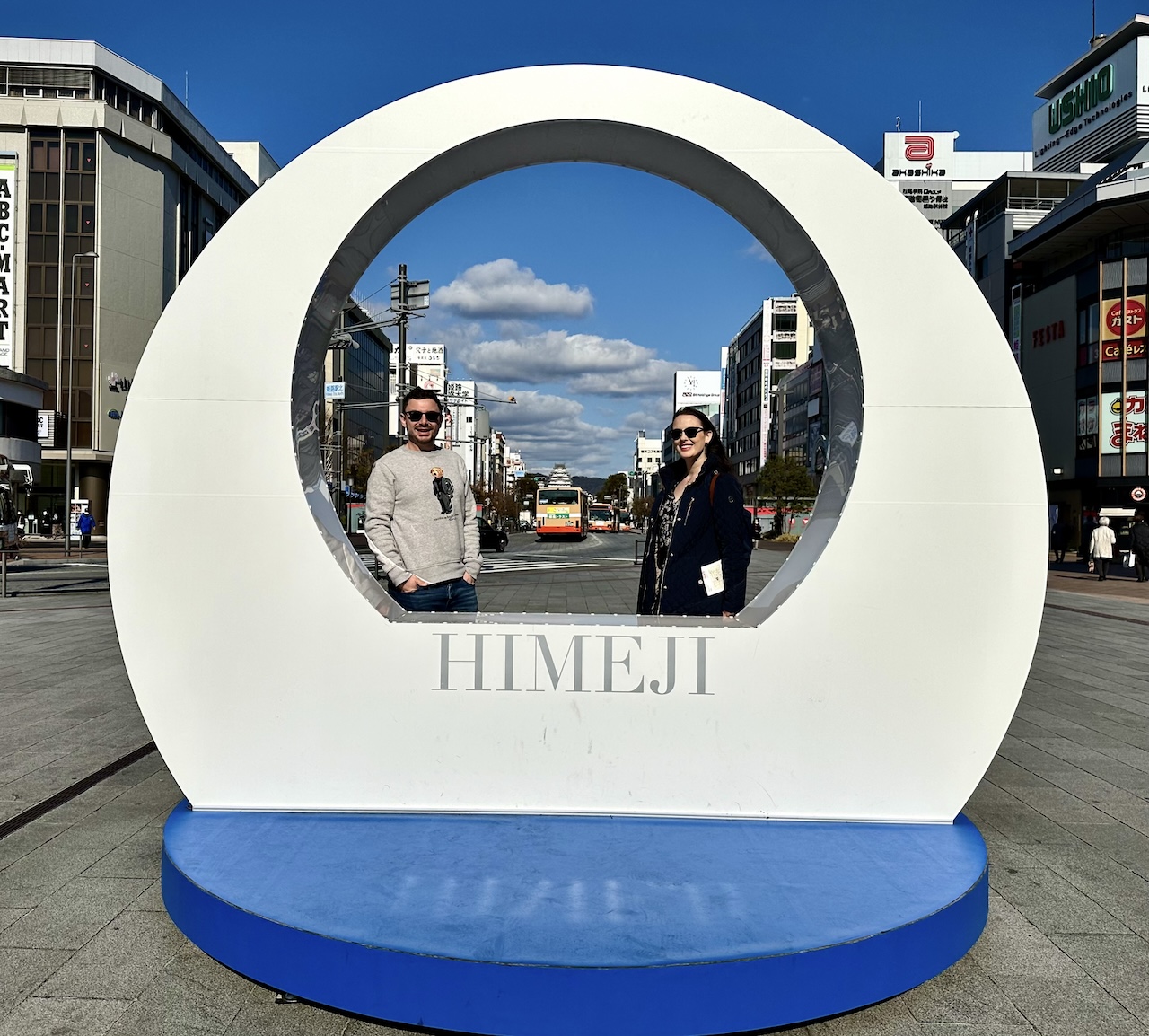
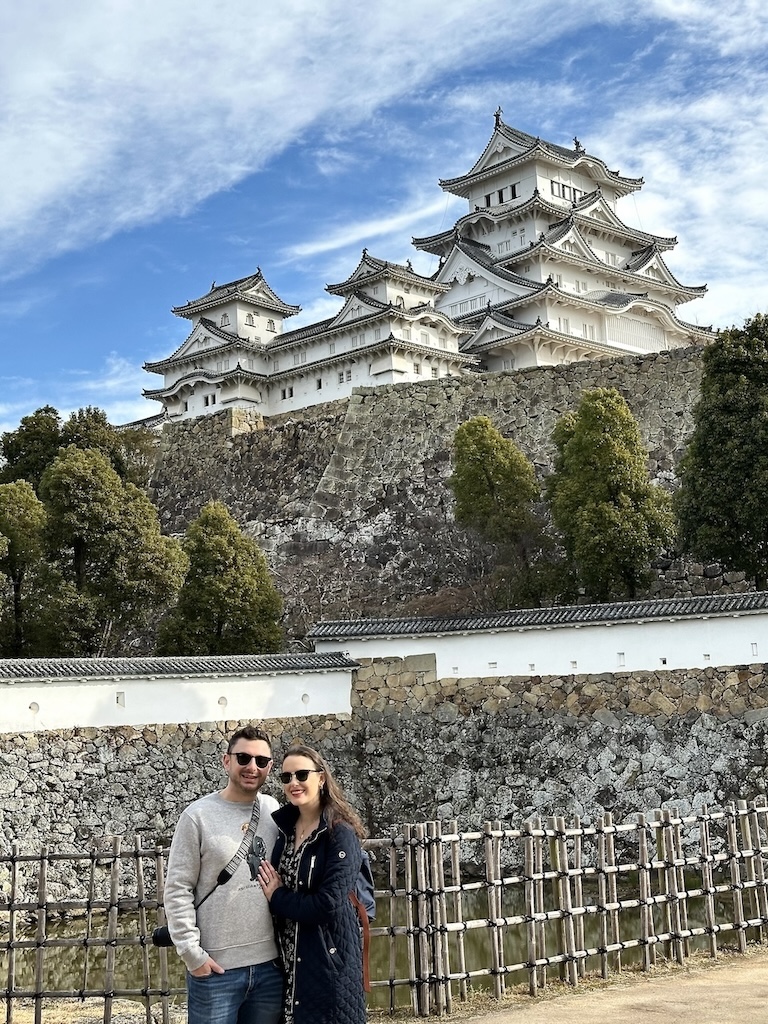
Why we loved Himeji
We fell in love with Himeji for its unique blend of history, natural beauty, and ease of exploration. Just a short Shinkansen ride away from Osaka, Himeji welcomed us with its captivating charm. The Koko-en Garden provided a tranquil oasis, where we wandered among lush greenery, peaceful koi ponds, and traditional tea houses, immersing ourselves in the serenity of Japanese nature. We were pleasantly surprised how green the gardens were for January, with beautiful blooms including a few different varieties of camilla, Japanese allspice, and paperwhite.
However, it was the iconic Himeji Castle that truly stole our hearts. Rising proudly against the modern Himeji skyline, its pristine white plaster walls and elegant architecture left us in awe of Japan's rich history. Exploring the castle's storied halls and labyrinthine corridors, we marveled at its strategic design and centuries-old history. We also thoroughly enjoyed learning about the legendary Princess Sen and her ties to Himeji Castle.
Himeji was easily navigated on foot, thanks to its compact layout and well-marked streets. Himeji's beauty, history, and ease of exploration made it a highlight of our journey through Japan!
A Deep Dive: Himeji Castle
European Castles vs. Japanese Castles
European and Japanese castles showcase distinct architectural styles and cultural differences, reflecting the unique historical contexts in which they were built. European castles, such as those found in England, France, and Germany, often feature grandiose designs with towering turrets, fortified walls, and expansive courtyards. These castles served as both noble residences and military strongholds, boasting lavish interiors with ornate decorations, grand reception halls, and luxurious living quarters. In contrast, Japanese castles, exemplified by structures like Himeji Castle, prioritized functionality and defense. They have compact layouts, multi-tiered roofs, and strategic placement of defensive features like trapped doors and narrow corridors. Japanese castles were primarily built as military installations, with minimal emphasis on extravagant living spaces or grandeur. While both European and Japanese castles served similar defensive purposes, their architectural designs and cultural influences result in distinct and fascinating contrasts for visitors to explore.
Himeji Castle Visitor Information
Himeji Castle offers a unique experience for those new to Japanese castles, as it remains largely in its original state unlike Osaka Castle, which has had its interior transformed into a museum. Before visiting Himeji Castle, there are some important things to remember:
- Himeji Castle is not handicap accessible. Be prepared to walk up steep staircases, almost ladder-like, during your visit. If you have mobility issues, it might be best to skip a visit inside the castle.
- Shoes must be removed before entering the castle, so wear easily removable shoes and bring socks. A bag for your shoes is provided. Slippers are also provided for you to wear throughout your visit. However, we found the provided slippers to be difficult to walk in and slippery, so use caution.
- Ceilings in parts of the castle, especially stairwells, are low, so be mindful and careful while navigating through the castle. Neither of us are tall (standing at 5'2" and 5'7") and we both had to watch our heads in a few places throughout our visit of Himeji Castle.
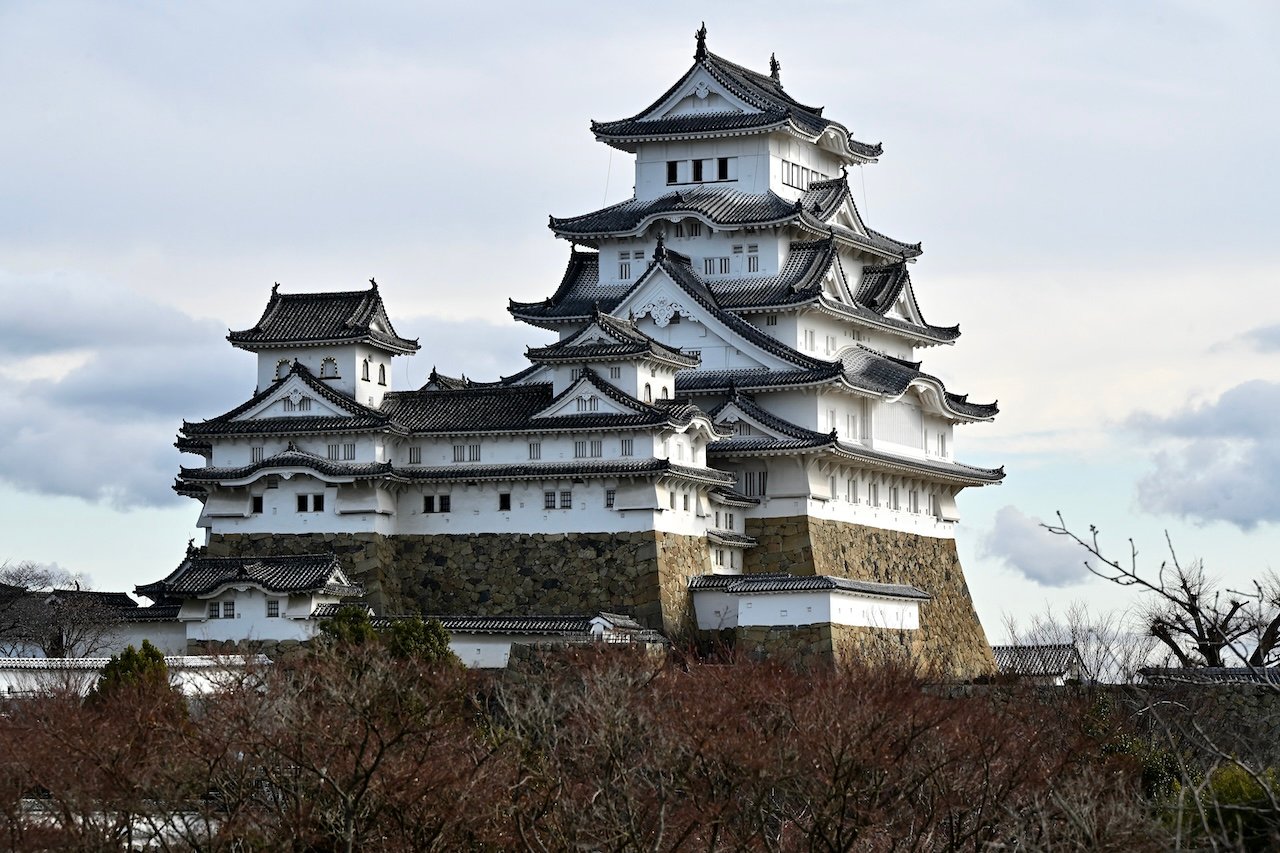
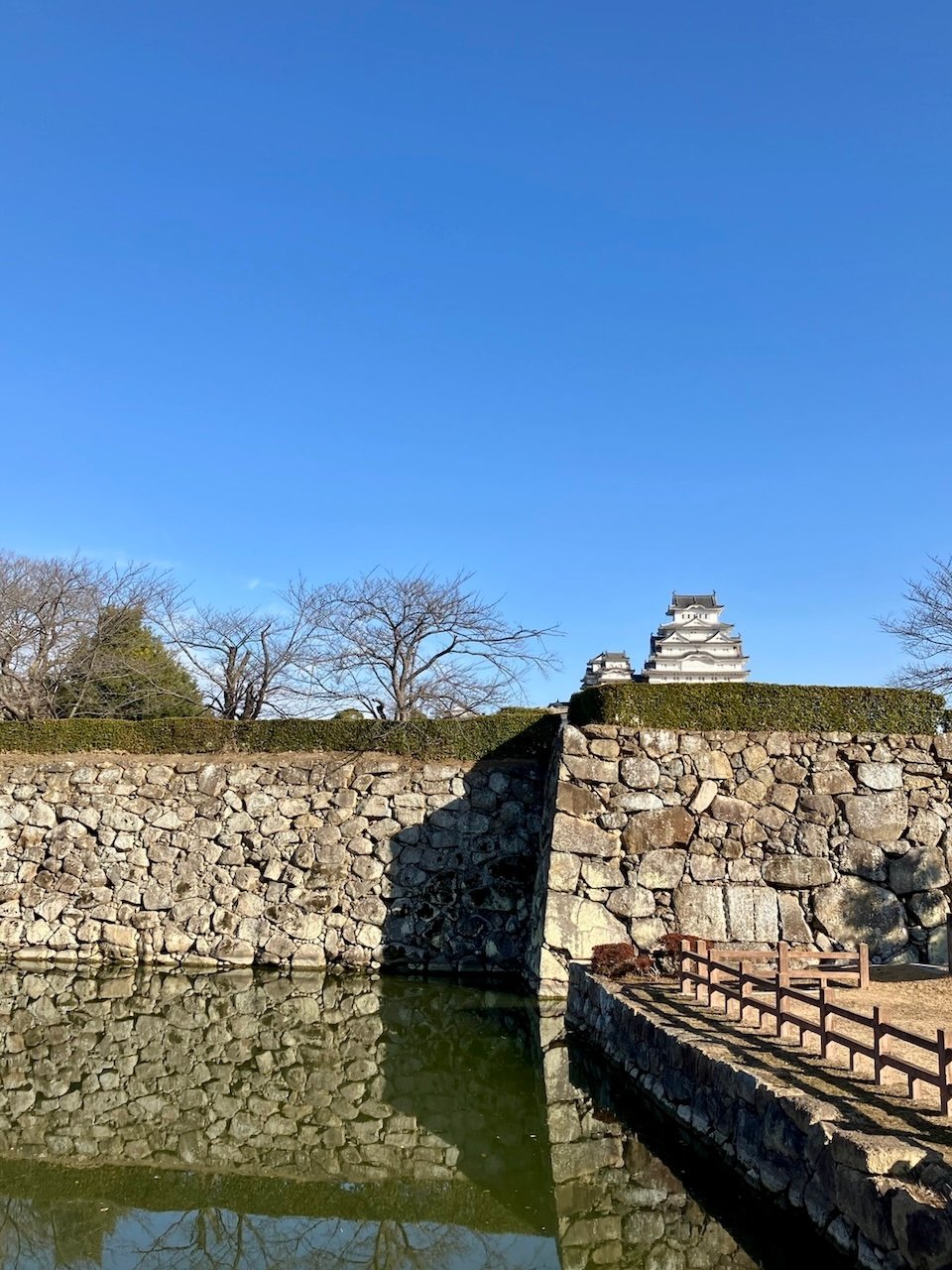
%20(1).png?width=3690&height=2079&name=Jetset%20Seeker%20Logo%20(Banner)%20(1).png)
